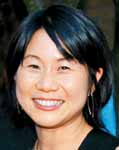- Acne
- Actinic Keratosis
- Aesthetics
- Alopecia
- Atopic Dermatitis
- Buy-and-Bill
- COVID-19
- Case-Based Roundtable
- Chronic Hand Eczema
- Drug Watch
- Eczema
- General Dermatology
- Hidradenitis Suppurativa
- Melasma
- NP and PA
- Pediatric Dermatology
- Pigmentary Disorders
- Practice Management
- Precision Medicine and Biologics
- Prurigo Nodularis
- Psoriasis
- Psoriatic Arthritis
- Rare Disease
- Rosacea
- Skin Cancer
- Vitiligo
- Wound Care
Article
Vitamin D deficiency extensive in basal cell nevus syndrome patients
A recent study1 has looked at the extent and variability of vitamin D deficiency in patients with basal cell nevus syndrome (BCNS). It does not reach any surprisingly new conclusions, but rather adds details on the scope of that deficiency, as has been seen in a growing body of literature across a wide range of maladies.

Key Points
Stanford, Calif. - A recent study1 has looked at the extent and variability of vitamin D deficiency in patients with basal cell nevus syndrome (BCNS). It does not reach any surprisingly new conclusions, but rather adds details on the scope of that deficiency, as has been seen in a growing body of literature across a wide range of maladies.
Lead author of the paper Jean Y. Tang, M.D., Ph.D., research dermatologist, Stanford University, told Dermatology Times the study was conducted at four sites across the country and enrolled 41 ambulatory patients with BCNS.
It measured serum levels of 25-hydroxyvitamin D (25[OH]D) using definitions of severe deficiency (<10 ng/mL), deficiency (<20 ng/mL) and insufficiency (<30 ng/mL). Higher levels were considered to be sufficient. Those levels are consistent with revised dietary reference intake levels recommended by the Institute of Medicine (IOM) in its 2010 report on calcium and vitamin D.
Study results

Not surprisingly, patients who were deficient were more likely to be overweight. There also was a 7.1 ng/mL difference in serum levels between samples collected in summer and winter.
Dr. Tang says the key messages for dermatologists are that "as much as these patients visit their dermatologists on a regular basis and hear the sun protection message, these patients still had higher 25-hydroxyvitamin D levels in the summer compared to the winter.
"What this tells me is that as much as they are trying to avoid the sun, they are not doing such a great job, because their vitamin D levels are higher in the summer than winter," she says.
"The second important message is that even if we took their average serum vitamin D levels across different seasons, patients with BCNS are three times more likely to be low in vitamin D levels compared to their age, gender, season matched controls. They need to be taking vitamin D supplements," Dr. Tang says.
Preliminary data from the mouse model shows that topical application of a vitamin D "seems to lower the proliferation rate of tumor cells," Dr. Tang says. This is supported by anecdotal reports that supplementation in humans "may lower the growth of skin lesions."
But as the IOM report on vitamin D states, current recommendations (400-600 IU) are adequate for most adults. There is little data in humans on what might be sufficient or optimal levels of vitamin D to maximize any beneficial effect.
Dr. Tang says she recommends that all BCNS patients have their vitamin D levels checked and that they take supplements when necessary. She seeks to achieve serum levels of at least 30 ng/mL with her patients. A good rule of thumb is that 100 IU of vitamin D3 increases serum 25-hydroxyvitamin D levels by 1 ng/mL.
"Let's say your level is 20 ng/mL; then you should bump it up to 30 at least. That means you should take 1,000 IU," she says.
Dr. Tang also reminds patients that recommended daily amounts of vitamin D are age-specific because exposure to the sun and the body's ability to synthesize vitamin D from the sun generally decline with age.
Men are not particularly good at taking to heart their dermatologist's advice on photoprotection.
"They love hunting or fishing or working outdoors, and that is a population that probably is not at great risk for vitamin D deficiency," she says.










